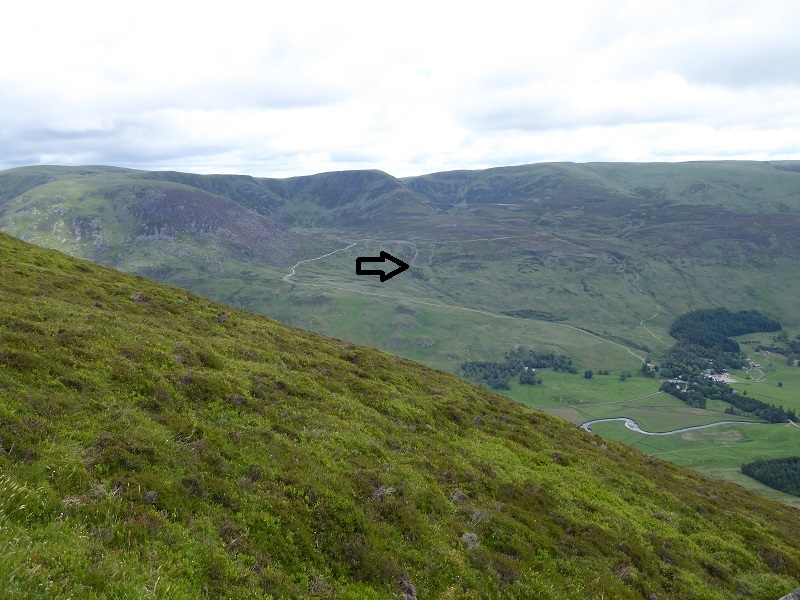
Two weeks ago, when I was in Glen Clova, I went to take a closer look at some of the tracks I had seen while doing a round of the Glen Prosen skyline (see here). This post takes a further look at what has been happening. None of the five tracks featured here appears on the OS Map used on either the Cairngorms National Park Authority or Angus Council Planning Portals:
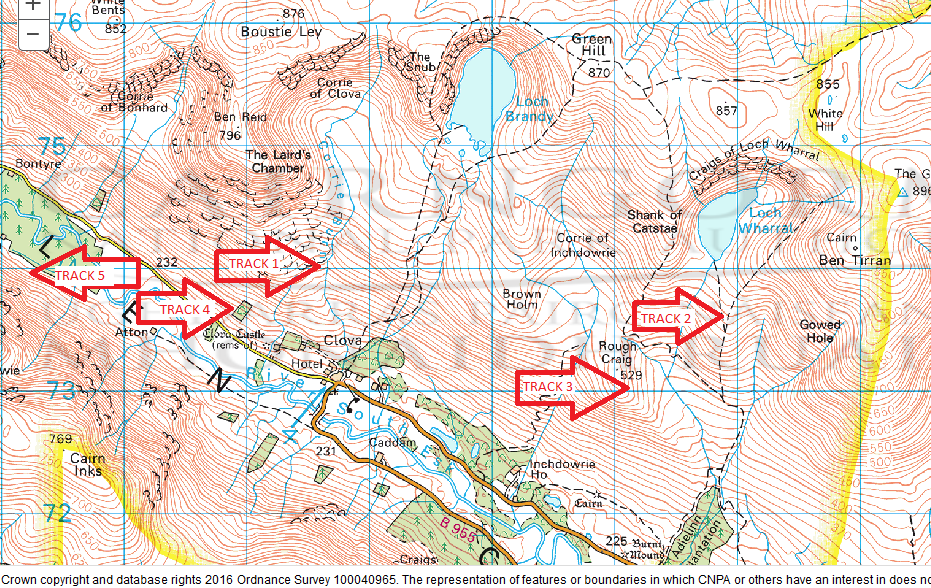
If you zoom in further on the map to the level that shows planning applications, there are none at all for these tracks or for the new bothy by Loch Wharral at the top of Track 2. While it is arguable that Track 4 was constructed for forestry purposes, and therefore did not need any type of planning permission before the introduction of Prior Notification system in 2014, in my view all the other tracks should have required full planning permission. Whatever the legal position,in my view an extremely fine area of landscape within a National Park has been trashed in a very short period of time without any public debate and without the consent of the Cairngorms National Park Authority. What even more appalling is that, apart from Track 1, there is very little the Cairngorms National Park Authority can do about it.
Track 1 – Track above Clova Hotel
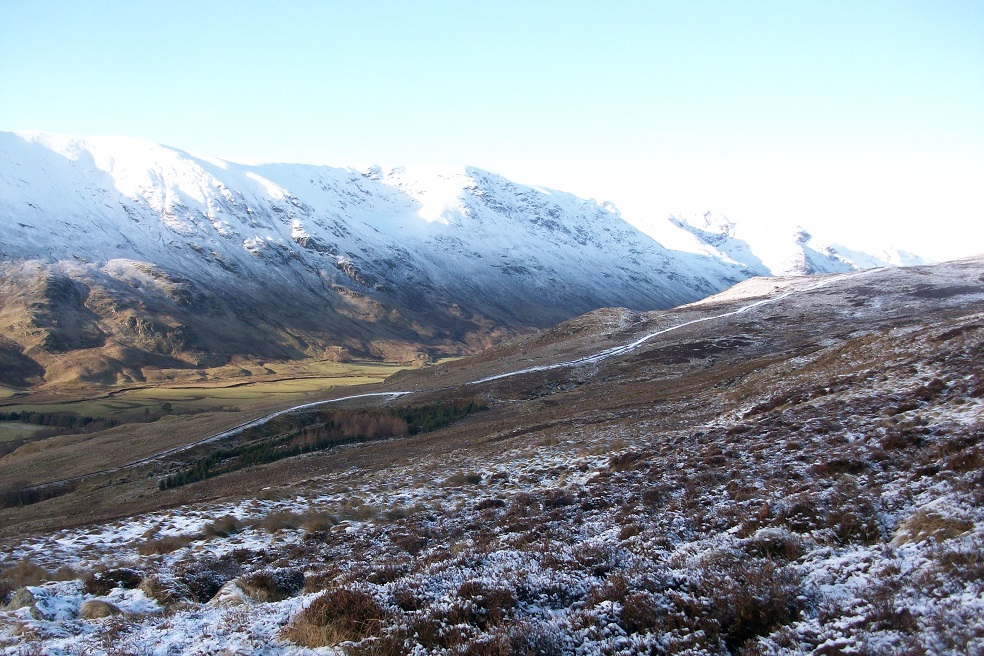
I had wrongly thought (see top photo) that this track had been created in order to construct the hydro scheme above the Glen Clova Hotel. (The consent for the hydro scheme was given to Clova Farms Ltd who appear to be owned by the same people who own the Clova Hotel). No track was consented for that scheme because construction of the two hydro intakes was to be by helicopter and while vehicles were used, the CNPA has kindly confirmed to me in the last two weeks that the track was constructed afterwards and negotiations are still taking place with the landowner.
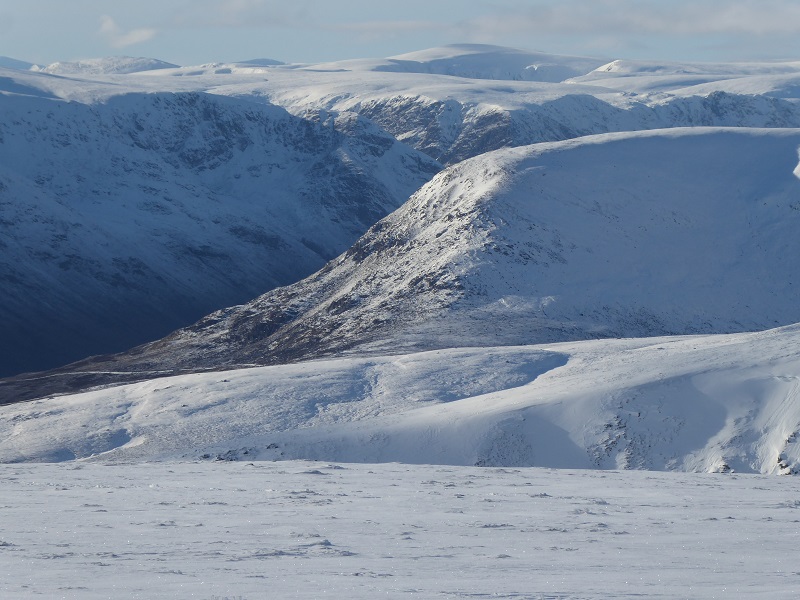
The track is highly visible from all directions and because of this the CNPA should insist that it is removed. While not built to construct the hydro scheme above the Glen Clova Hotel , it is very clear that it is being used to access the first intake:
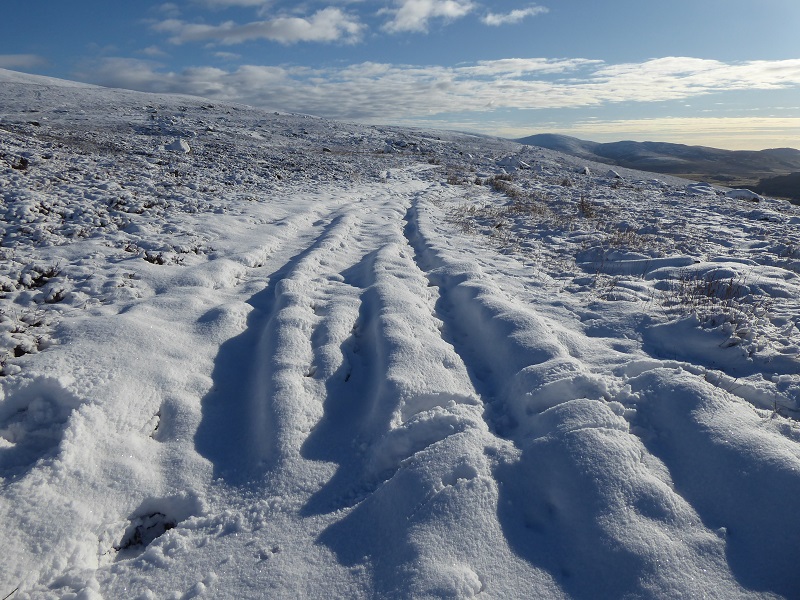
It also appears to be being used for the purpose of rearing game birds:

The fact that its extremely poorly designed and constructed is in a sense irrelevant as it shouldn’t ever have been constructed in the first place because of its landscape impact. The poor construction, however, adds to the impression that whoever constructed this track does not care about the landscape:
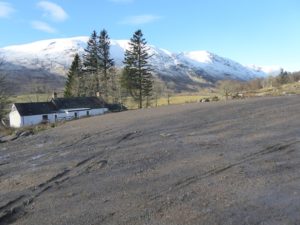

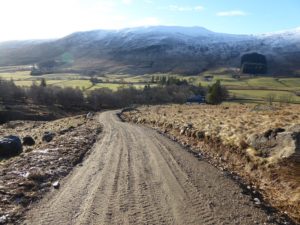
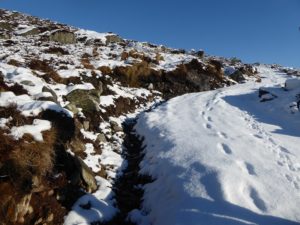
The lack of care is also evident in the construction of the first hydro intake:
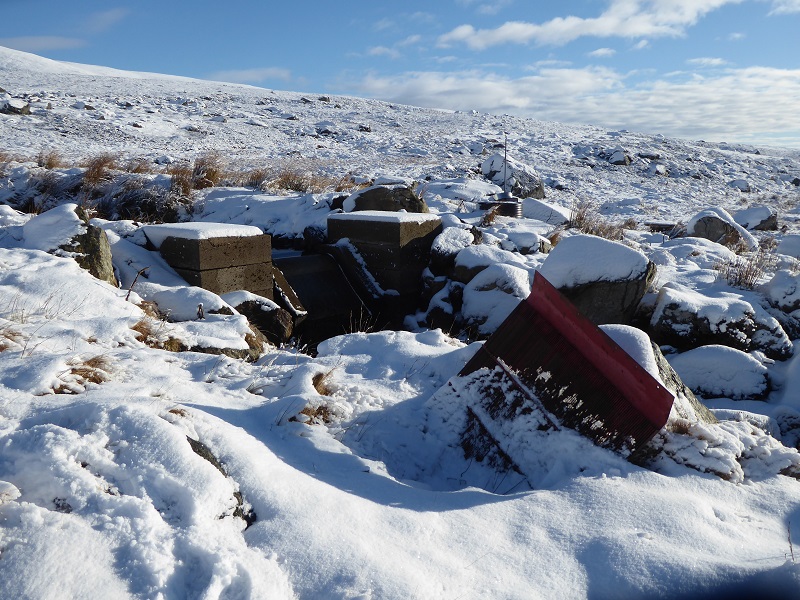
The original intake screen for the hydro – its a tiny intake and I suspect dries up in summer – has already been replaced but instead of removing the old red screen its been left dumped on the site.

Besides being poorly designed – you can make out a bright “Lomond” blue pipe and concrete lid to pipe access – we walked by several sections of abandoned pipe. I don’t know if the Cairngorms National Park Authority have visited the intakes but they need to order a clear-up.
If the Glen Clova Hotel tries to justify the new track as being needed to access this intake, in my view the response should be simple, an intake of this tiny size should NEVER justify permanent new hill tracks. I believe this track is a real test for the CNPA and the presumption set out in the National Park Partnership Plan that there should be no new hill tracks. The challenge will be how to get the landowner to restore the track and, if the CNPA do not believe they have sufficient powers to do this, they should say so now while the Planning Bill is going through the Scottish Parliament.
Track 2 to Loch Wharral
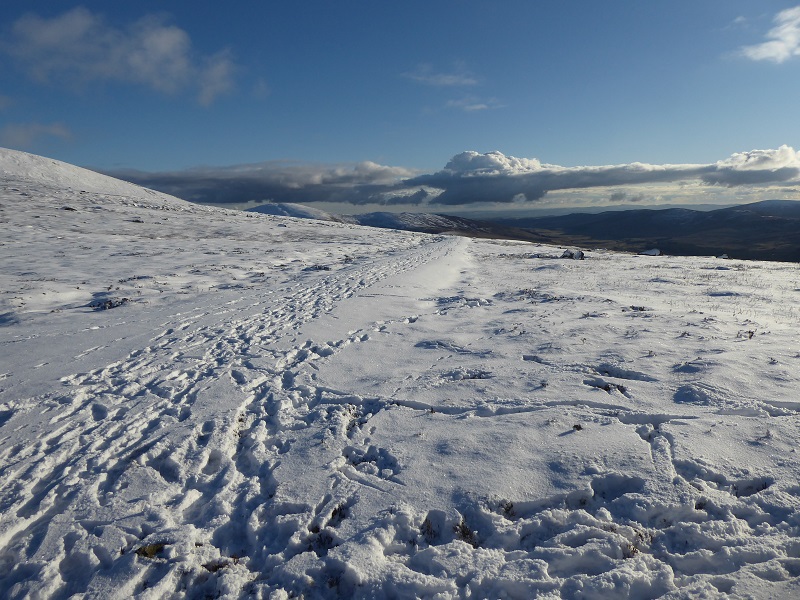
I did not walk along Track 2 which follows the line of the old path up to Loch Wharral and a newly constructed bothy but even under snow you could see it forms a prominent way across the moor.
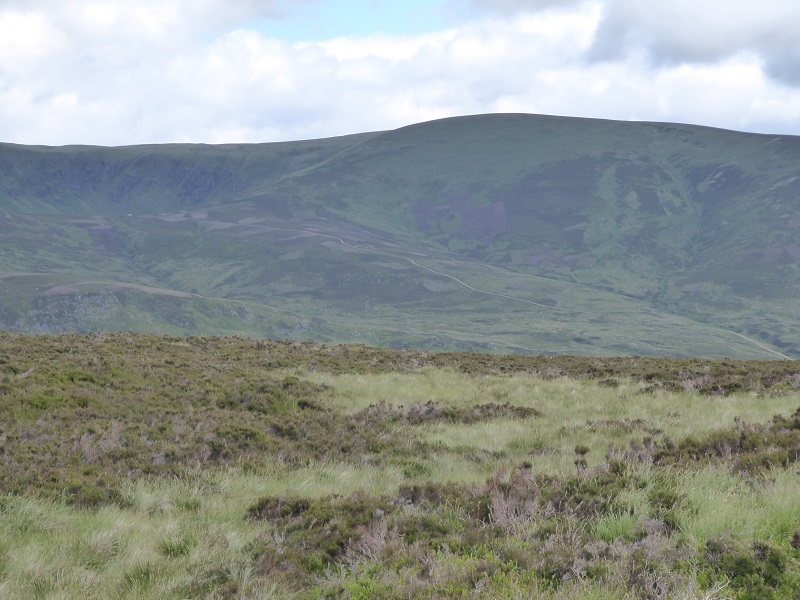
This track is on the Rottal estate, which has been responsible for creating several further tracks outside the National Park Boundary (which runs up Ben Tirran, the hill on the right). According to the Cairngorms National Park Authority the track had been created by 2012 at latest while the bothy – there had been a ruin here before apparently though its not on my old map – was built sometime between 2008 and 2014. Neither had planning permission.
The problem is our planning law, as set out in the Town and Country Planning (Scotland) Act 1997 and Scottish Government Planning Circular 10/2009 which set out the rules on Planning Enforcement:
TIME LIMITS ON ENFORCEMENT ACTION
Breaches with a 4-Year Time Limit
10. Where a breach of planning control consists of the carrying out of any form of ‘operational development’ without planning permission, section 124(1) provides that enforcement action may only be taken within 4 years of the date on which the operations were ‘substantially completed’. This provision extends to building, engineering, mining and other operations in, on, over or under the land.
Hill tracks are classified as operational developments and, since this track had been created by 2012, the CNPA would have had to initiate enforcement action at least two years ago to be able to remove it. While I can understand there is a need for time limits on enforcement action for some types of case, the whole system seems based on the assumption that planning authorities are aware of breaches of planning requirements and have chosen to do nothing about it. Given cuts in the numbers of planning staff, such assumptions are no longer justifiable.
In the case of National Parks though, when a landowner undertakes a development without planning permission that has a serious impact on its special qualities such landscape, conservation or recreational enjoyment, then I am not sure there should be any time limits to when enforcement action could take place. The expectation should be that all developments require planning permission and no-one should get away with it. I would have hoped that the CNPA might have made this case when responding to the Planning Bill (see here) and in my view it is an example of the type of change to our planning law which is needed to make enforcement more effective.
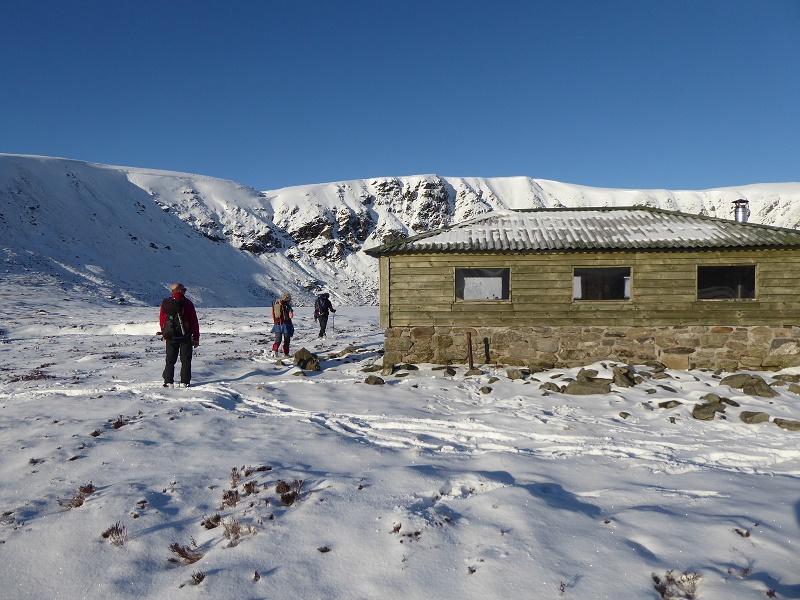
Track 3 – Rough Craig
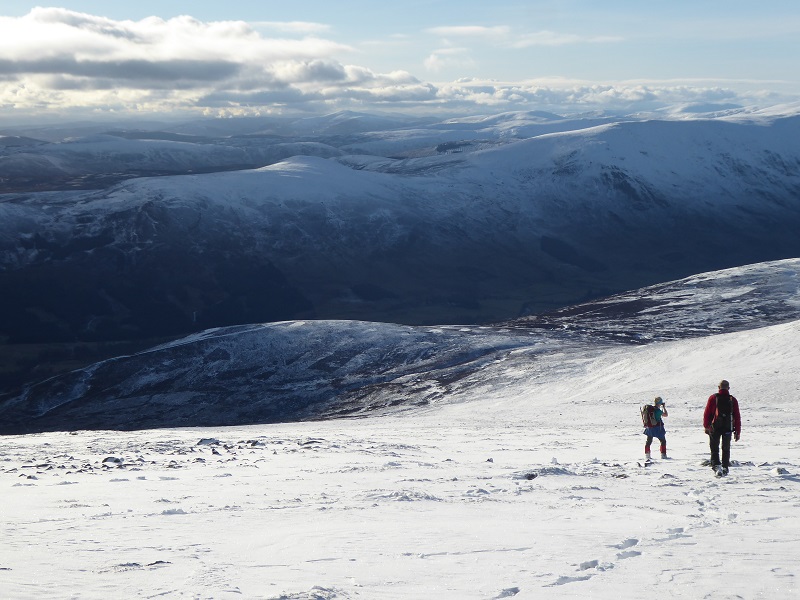
According to the CNPA, the track over Rough Craig had also been constructed by 2012 and is therefore outside planning enforcement time limits. Following as it does the crest of the ridge and being built up above the surrounding moor it forms another very prominent landscape scar.
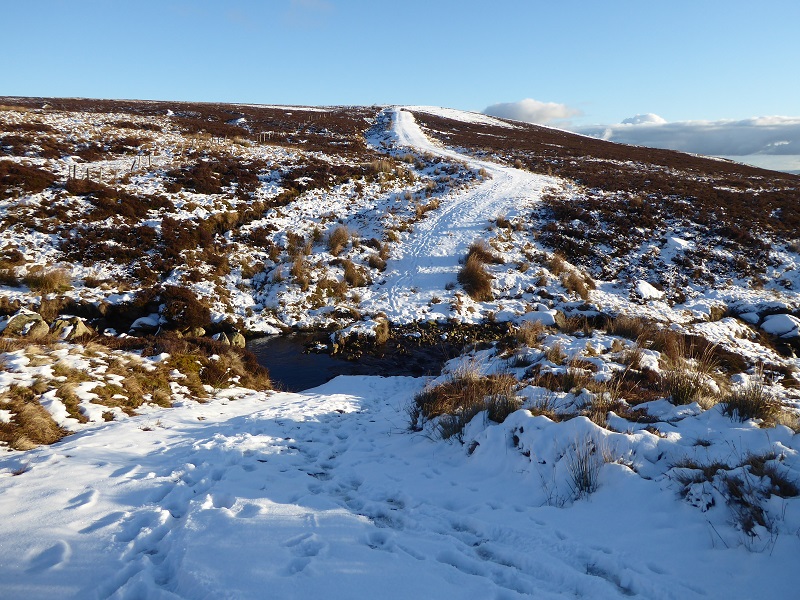
Track 4
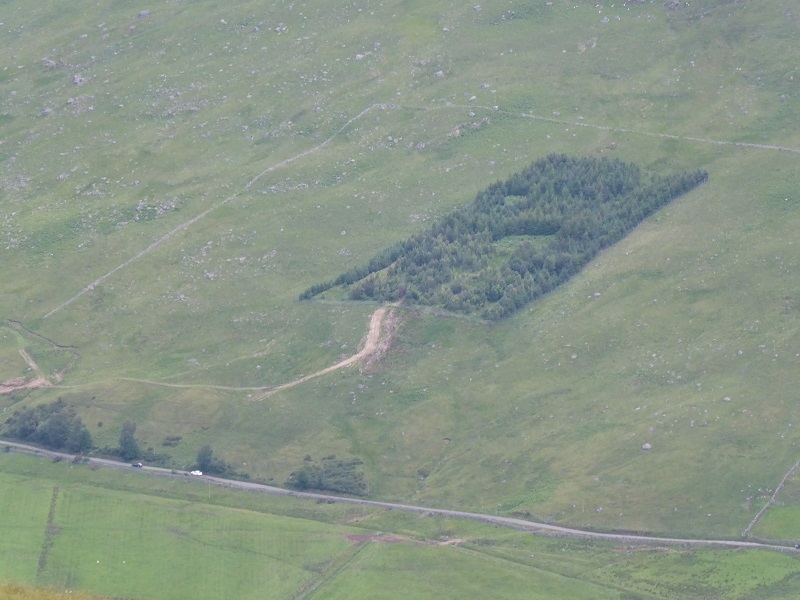
I did not have time to visit Track 4 which is highly prominent when you are driving up Glen Clova and from a distance. While significantly shorter than other tracks, this track is a good demonstration of the impact “forest” tracks can have when crossing open ground and why all forest tracks should require full planning permission. I have no information of when this track was constructed but unless its been since December 2014, when the Prior Notification was introduced, the CNPA is very unlikely to be able to take any enforcement action.
Track 5
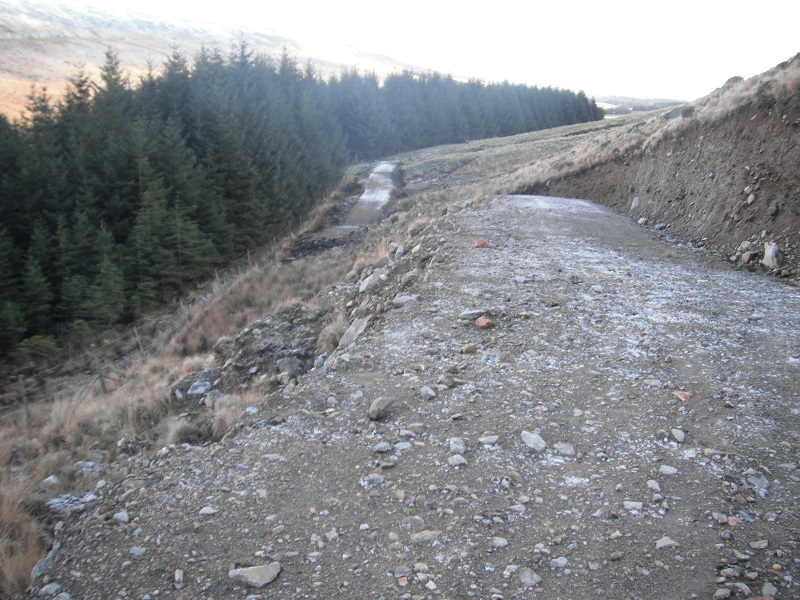
Across the glen, on the west side of the river, north of the hotel, behind a plantation so not visible from the road, there is yet another track which George Allan told me about. Again I have not visited but George reported it to the CNPA and it apparently pre-dates the Prior Notification system, so yet again no action can be taken, although in terms of construction its the most shocking of all the tracks:
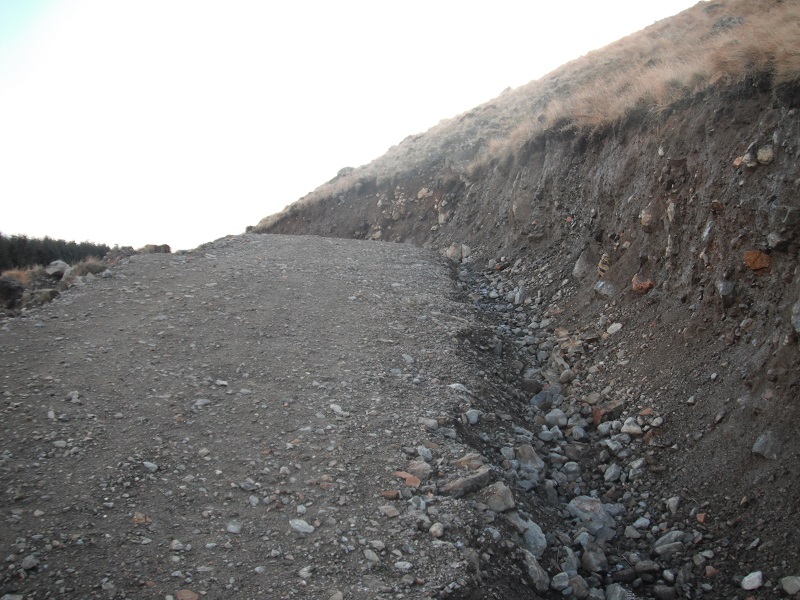
Our National Parks also need new powers to ensure that older hill tracks, which could not now be removed even if the law changes, are of a good standard of design and construction.
And, just in case you think that’s it………..
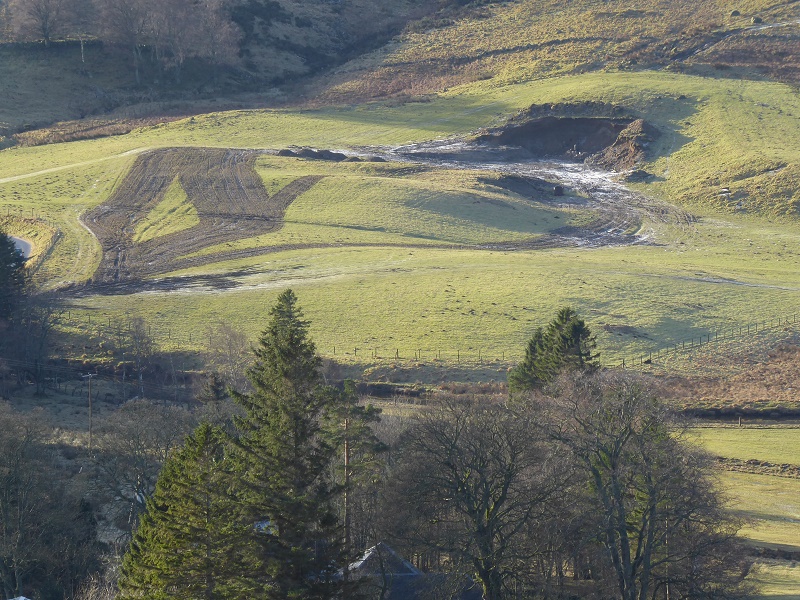
Here is a photo of work currently going on in the glen. There have been historic issues in Glen Clova with landforms being altered without appropriate permissions and this has been reported to the CNPA. We will see what happens but if you see earthworks or earth moving equipment in the National Park report it!
What needs to be done
What has been happening in one short section of one glen in the Cairngorms National Park over (say) the last ten years should in my view be a national scandal. Unfortunately, its not the only example and the landscape in Drumochter has been similarly trashed. The basic issue is that landowners believe and act as if they can do whatever they want on their land without any consideration of the public interest even though their land is in a National Park. This issue is unlikely to be fully addressed without far more extensive land reform.
While the CNPA took their eye off the ball for far too long, they have acknowledged this and are now taking steps both to monitor hill tracks and to initiate enforcement action where they have the powers to do so. The enforcement process is painfully slow and because of this its not possible to tell whether the CNPA have sufficient powers to ensure the unlawful tracks on the Cluny Estate (see here) and above the Clova Hotel are removed and the land fully restored.
While the Scottish Government repeats ad nauseum the need to speed up planning applications – and judges our Planning Authorities on this – it has so far has taken no interest in trying to speed up enforcement process. It should do so, and if our National Parks and other Planning Authorities need new powers to do this, they should be given this in the Planning Bill. Indefinite periods to take enforcement action against developments which harm landscape or conservation would be a good start.

Google Earth has images from 2008, 2011 and 2012 which may help in assigning ages to the tracks
Thanks Ian, I understand the CNPA has been using google earth as one means of trying to establish age of tracks. If people have direct evidence of tracks being constructed, such as photos with the date, I am sure the CNPA would welcome these, Nick
So have you actually reported these to the relevant planning Authorities? Otherwise they will not be prompted to take action
Yes, sorry if the article was not clear enough, they have been reported to the Cairngorms National Park Authority but it has said for most of them they cannot take action, mainly because they appear to pre-date the prior notification system or are more than three years old. This is why its important that hill-goers should report any new hill tracks they see and not assume others will do so.
Bothies can save lives